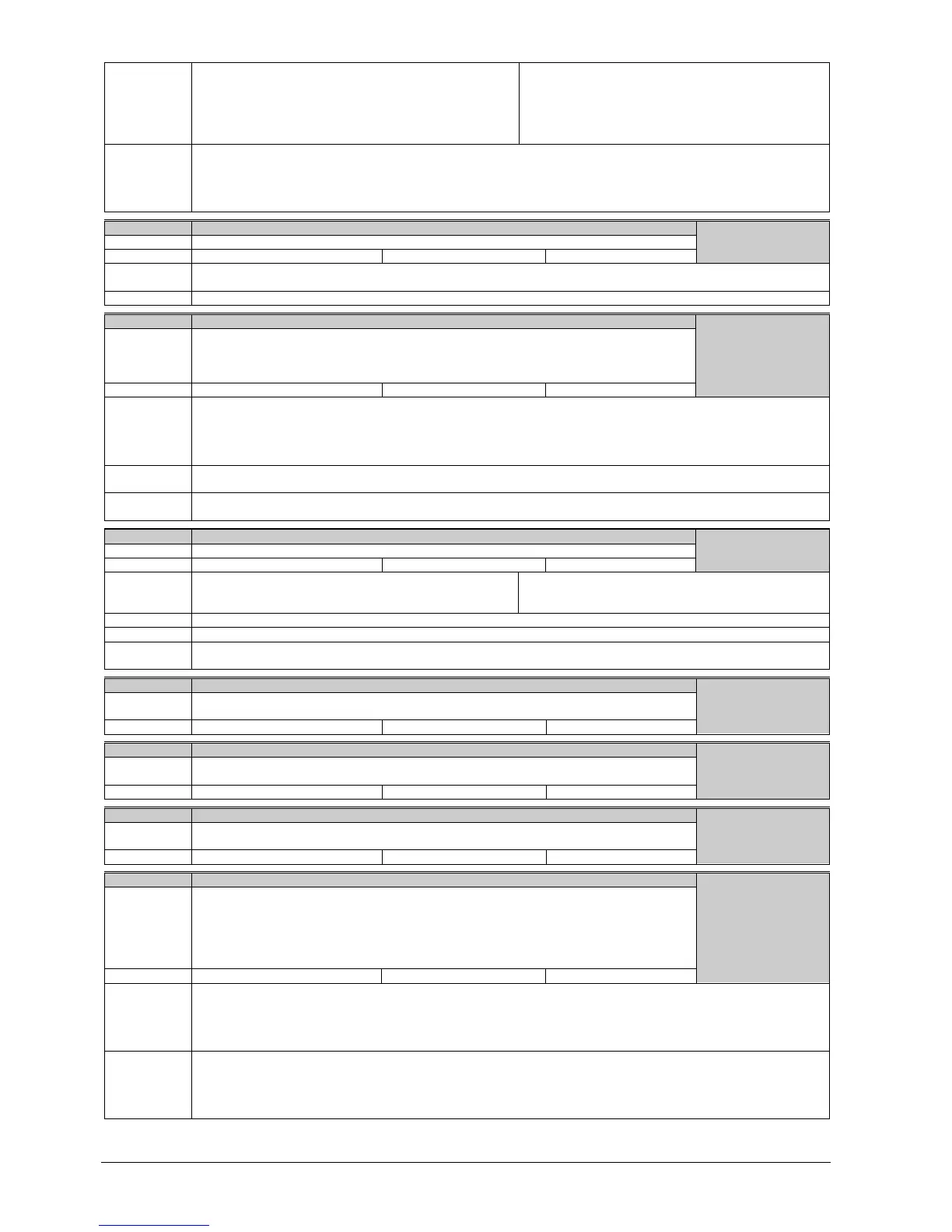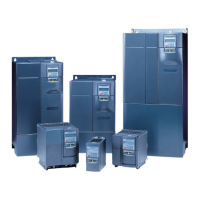92/126
Siemens Building Technologies SED2 variable speed drives CM1U5192en
HVAC Products Programming 01.2002
Settings:
0 =Flying start disabled
1 =Flying start is always active, start in direction of setpoint
2 =Flying start is active if power on, fault, OFF2, start in
direction of setpoint
3 =Flying start is active if fault, OFF2, start in direction of
setpoint
4 =Flying start is always active, only in direction of setpoint
5 =Flying start is active if power on, fault, OFF2, only in
direction of setpoint
6 =Flying start is active if fault, OFF2, only in direction of
setpoint
Note:
Useful for motors with high inertia loads.
Settings 1 to 3 search in both directions.
Settings 4 to 6 search only in direction of setpoint.
Flying start must be used in cases where the motor may still be turning (e.g. after a short mains break) or can be driven
by the load. Otherwise, overcurrent trips will occur
P1202 Motor-current: Flying start
Defines search current used for flying start.
Unit: % Min: 10 Def: 100 Max: 200
Level 3
Details:
Defines search current used for flying start.
Value is in [%] based on rated motor current (P0305).
Note:
Reducing the search current may improve performance for flying start if the inertia of the system is not very high.
P1203 Search rate: Flying start
Sets factor by which the output frequency changes during flying start to synchronize with turning
motor. This value is entered in [%] relative to the default time factor defines the initial gradient in
the curve below (and thus influences the time taken to search for the motor frequency):
fmax + 2 f slip
Unit: % Min: 10 Def: 100 Max: 200
Level 3
Details:
Sets factor by which output frequency changes during flying start to synchronize with turning motor. Enter this value in [%]
relative to default time factor (which defines the initial gradient and influences time taken to search for motor frequency). The
search time is the time taken to search through all possible frequencies (between [f_max+2*f_slip] and 0 Hz).
P1203=100 % is defined as giving a rate of 2 % of f_slip,nom / [ms].
P1203=200 % would result in a rate of frequency change of 1 % of f_slip,nom / [ms].
Example:
For a motor with 50 Hz, 1350 rpm, 100 % would produce a maximum search time of 600 ms. If the motor is turning, the
motor frequency is found in a shorter time.
Note:
A higher value produces a flatter gradient and thus a longer search time.
A lower value has the opposite effect.
P1210 Automatic restart
Enables restart after a mains break or after a fault.
Unit: - Min: 0 Def: 1 Max: 5
Level 3
Settings:
0=Disabled
1 =Trip reset after power on: P1211 disabled
2 =Restart mains break; power on: P1211 disabled
3 =Restart after fault/mains break: P1211 enabled
4 =Restart after mains break: P1211 enabled
5 =Restart mains break/fault/power on: P1211 disabled
Dependency:
Auto restart requires constant ON command (e.g. via a digital input wire link).
Caution:
Settings 2 to 5 can cause the motor to restart unexpectedly
Note:
Flying start must be used in cases where the motor may still be turning (e.g. after a short mains break) or can be driven
by the load (P1200).
P1211 Number of restart attempts
Specifies number of times the variable speed drive will attempt to restart if P1210 (flying start)
is activated.
Unit: - Min: 0 Def: 3 Max: 10
Level 3
P1212 Time to first restart
Selects the time before the variable speed drive is restarted for the first time if P1210 is
activated.
Unit: s Min: 0 Def: 30 Max: 1000
Level 3
P1213 Restart time increment
Selects the amount the restart time is increment for each restart of the variable speed drive if
P1210 is activated.
Unit: s Min: 0 Def: 30 Max: 1000
Level 3
P1230[2] BI: Enable DC braking
Enables DC braking via a signal applied from an external source. Function remains active
while external input signal is active.
DC braking causes the motor to stop rapidly by applying a DC braking current (current
applied also holds shaft stationary).
When the DC braking signal is applied, the variable speed drive output pulses are blocked
and the DC current is not applied until the motor has been sufficiently demagnetized.
Unit: - Min: 0:0 Def: 0:0 Max: 4000:0
Level 3
Details:
Enables DC braking via a signal applied from an external source. Function remains active while external input signal
is active. DC braking causes the motor to stop rapidly by applying a DC braking current (current applied also holds
shaft stationary).
When the DC braking signal is applied, the variable speed drive output pulses are blocked and the DC current is not
applied until the motor has been sufficiently demagnetized.
Settings:
722.0=Digital input 1 (requires P0701 set to 99, BICO)
722.1=Digital input 2 (requires P0702 set to 99, BICO)
722.2=Digital input 3 (requires P0703 set to 99, BICO)
722.3=Digital input 4 (requires P0704 set to 99, BICO)
722.4=Digital input 5 (requires P0705 set to 99, BICO)

